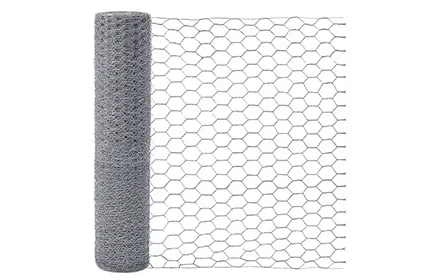-
 Phone:
Phone: -
 Email:
Email:

Installation of Rockfall Netting for Slope Stability and Erosion Control Solutions
Rockfall Netting Installation A Critical Safety Measure in Geotechnical Engineering
Rockfalls pose significant hazards to infrastructure, environments, and human lives, particularly in mountainous and steep terrain. To mitigate these risks, the installation of rockfall netting has become an essential practice in geotechnical engineering. This article will explore the importance of rockfall netting, the installation process, and its benefits.
Understanding Rockfall Hazards
Rockfalls occur when weathered rock or debris becomes detached from steep slopes, often as a result of natural processes like freeze-thaw cycles, erosion, or seismic activities. Human activities, such as construction and mining, can also exacerbate the risk. The consequences of rockfalls can be devastating, leading to property damage, road closures, and even loss of life. Given the increase in urban development in previously rugged terrains, the need for effective rockfall mitigation strategies has never been more critical.
What is Rockfall Netting?
Rockfall netting is a protective barrier designed to catch or deflect falling rocks before they reach vulnerable areas. The netting is typically made from high-tensile-strength materials such as steel wire, which is woven into a mesh. The system can be installed alone or in combination with other measures, such as rock bolts or shotcrete, to enhance overall stability. These nets are often categorized into different classes based on their strength and the size of the rock they are designed to catch or deflect.
The Installation Process of Rockfall Netting
The successful installation of rockfall netting involves several critical steps
1. Site Assessment The first step in the installation process is a thorough evaluation of the site. Experts conduct geological surveys to identify rockfall-prone areas, assess slope conditions, and evaluate the size and type of rocks in the vicinity. This information helps determine the appropriate type of netting and the installation technique needed for effective protection.
2. Designing the System Following the site assessment, engineers design a tailored rockfall netting system. Factors such as netting type, placement angle, and anchorage requirements are considered to ensure optimal performance in controlling potential rockfalls.
rockfall netting installation

3. Preparation of the Site Before installation, the site must be prepared. This might involve removing loose debris, vegetation, and any oversized rocks that could hinder the installation process. In some cases, it may also require stabilizing the slope using other geotechnical methods.
4. Installation of the Netting With the site ready, the installation of rockfall netting can begin. This process typically involves erecting support posts or anchors along the slope and securing the netting to these structures. Care must be taken to ensure that the netting is taut and properly anchored to withstand the forces exerted by falling rocks.
5. Post-Installation Inspection After installation, it is crucial to conduct a thorough inspection of the rockfall netting system. Engineers check for any signs of sagging or structural weakness and ensure that all anchors and supports are firmly in place. Regular maintenance checks are also required to identify potential wear and tear due to weathering or environmental factors.
Benefits of Rockfall Netting
The implementation of rockfall netting systems offers numerous benefits
- Safety Enhancement The primary advantage of rockfall netting is enhanced safety. By preventing rocks from falling onto roads, railways, and populated areas, these systems significantly reduce the risk of accidents and fatalities.
- Economic Efficiency In the long term, investing in rockfall netting can save costs associated with road repair, emergency response, and loss of productivity due to road closures. By minimizing rockfall events, communities can maintain uninterrupted services and economic activities.
- Environmental Protection Rockfall netting also provides a degree of protection for the local environment. By preventing rockfalls, the netting helps preserve the natural ecosystem, protecting flora and fauna from disturbances caused by falling rocks.
Conclusion
In conclusion, rockfall netting installation is a critical aspect of modern geotechnical engineering aimed at safeguarding lives and infrastructure. Through a systematic approach that includes site assessment, system design, and careful installation, rockfall netting serves as a reliable barrier against one of nature's unpredictable forces. As we continue to develop in areas prone to geological hazards, the importance of effective rockfall mitigation solutions like netting will undoubtedly become more pronounced.
-
Wire Mesh for Every Need: A Practical SolutionNewsJul.25,2025
-
Steel Fences: Durable, Secure, and Stylish OptionsNewsJul.25,2025
-
Roll Top Fencing: A Smart Solution for Safety and SecurityNewsJul.25,2025
-
Cattle Farm Fencing Solutions for Maximum SecurityNewsJul.25,2025
-
Affordable Iron Binding Wire SolutionsNewsJul.25,2025
-
Affordable Galvanized Wire SolutionsNewsJul.25,2025
-
Wire Hanger Recycling IdeasNewsJul.25,2025








